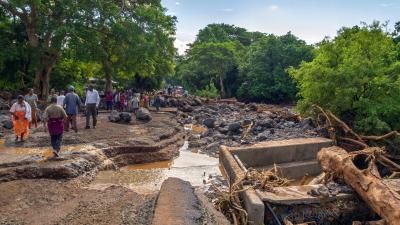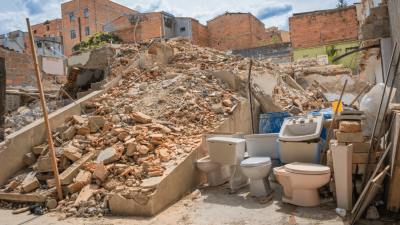A global safety charity has highlighted how losing access to critical infrastructure services, such as clean water and electricity, is harming confidence in the disaster preparedness of local governments in Eastern Africa, particularly among communities that have experienced disasters caused by natural hazards.
According to Lloyd’s Register Foundation, people in Eastern Africa who have experienced a disaster and lost access to critical infrastructure are much less likely to say their local government is well prepared to deal with a disaster compared to their national government, by a margin of 12 percentage points – the biggest gap globally. The finding comes from the Foundation’s latest analysis of its World Risk Poll, powered by Gallup, which surveyed 125,000 people across 121 countries.
The findings from the Foundation’s new report - Focus On: Critical infrastructure resilience and perceptions of disaster preparedness - examine the link between loss of critical infrastructure and confidence in both local and national government indicating who citizens tend to hold accountable. Respondents were asked about their experiences of losing access to one of five essential services (telephone, food, clean water, electricity, and medicine/medical help) and their confidence in national and local government disaster preparedness.
According to the data, all regions surveyed across Africa believed their national government was better prepared to deal with a disaster than local government. Gaps in confidence in favour of national government range from 7 to 12 percentage points among African respondents who had experienced a disaster and lost access to critical infrastructure. East African residents retained the highest confidence in their national government compared to local government, by 12 percentage points, and as high as 18 percentage points in Tanzania and Zambia. However, significant differences are apparent when comparing with some more developed global regions, such as Northern/Western Europe and North America, which either have roughly even confidence or greater confidence in local government.
Data from Lloyd’s Register Foundation’s World Risk Poll showed that 91% of people in Eastern Africa have lost access to at least one type of critical infrastructure for more than one day in the past year, which rises to 93% among those who have also experienced a disaster in the past five years. This includes loss of access to clean drinking water (experienced by 49% of the general population, and 55% of those who had experienced a disaster), food (47% and 57%), medicine/medical help (54% and 64%), telephone access (58% and 63%), and electricity (68% and 66%).
In response to the findings, Jan Przydatek, Director of Technologies at Lloyd’s Register Foundation, said: “The World Risk Poll has highlighted how trust and confidence in government are important components of resilience when natural hazards and other forms of disaster occur. Trust is fundamental for dealing not only with the initial impact but also for handling and recovering from the longer-term impacts on communities.
“The figures show how maintaining reliable access to critical infrastructure even outside of disaster scenarios is challenging in regions such as Eastern Africa. Improving this situation is a key challenge for international partners to support local governments with, and this may in turn lead to greater confidence in government disaster preparedness.”
The report recommends that national governments work more collaboratively with local governments and other actors to improved disaster preparedness and response, working within the context of international agreements such as the Sendai Framework for Disaster Reduction.
Savina Carluccio, Executive Director at International Coalition for Sustainable Infrastructure said: “Education could enhance understanding of the importance of disaster risk reduction and resilience and, in turn, improve the confidence of the public in the government’s plans and actions. Educating and building capacity of policymakers is a priority, since they are responsible for developing regulations and incentives to increase the uptake of disaster risk reduction and resilience. Enhancing capacity of practitioners at local level is urgently needed, and educational settings and civil society have a key role to play here. In parallel, improving public education would result in increased public buy-in for resilience projects, increase public understanding of disaster risks, and may contribute to a culture of risk awareness and resilience.”
For more information, see the full report: Focus On: Critical infrastructure resilience and perceptions of disaster preparedness.
Image Credits: Shutterstock - Vadim Petrakov



